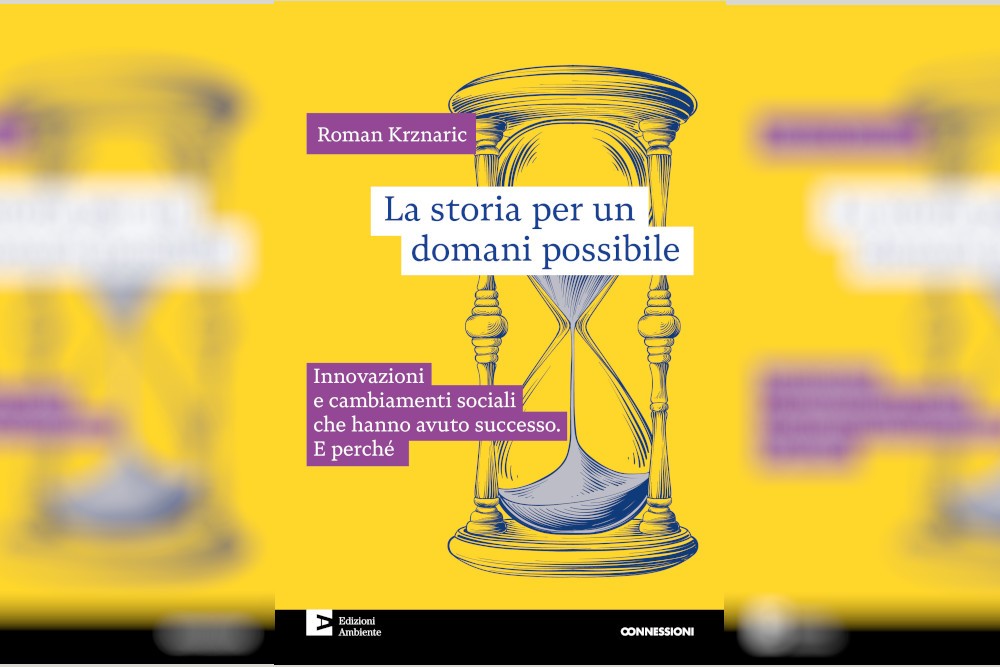In a world that runs into the future that ignores the lessons from the past, in his book “History for a morning possible” Roman Krznaric invites us to rediscover history as an aid for change. A journey between forgotten civilizations and revolutionary ideas to imagine a fairer and sustainable tomorrow
If the present appears as an irreversible fact, the past is especially useful to suggest possibilities that we would never take into account; Can warn us but also inspire us
Howard Zinn
When history turns into the future: the forgotten lesson from the past
An archive of solutions for the present
In his new book “History for a morning possible”” Roman krznaric He does not only tell the past: he transforms it into a tool to face the crises of the present. As tactile maps that are used by the Inuit – a native population originally from Greenland – to navigate in the dark, historical experiences become reference points to orientate between contemporary dangers: climate, wars, intolerance, inequalities.

Krznaric destroys the dominant idea that the future must be invented completely again. Instead, it shows how many solutions have already been tested. Just look back with new eyes.
KRZNARIC offers an optimistic vision of history as a source to face the current crises. Analyzes consumerism as a cultural construction born with the department stores and invites you to overcome it through aregenerative economy. Finally, it shows how practices that are similar to social media already existed in ancient Rome, which emphasizes that social technologies are not new.
Lost civilizations, the hope found
From pre-industrial Japan to the Córdoba of the year a thousand, from post-colonial Singapore to the nineteenth-century Kerala, the story is littered with virtuous examples. Communities that are able to live with tolerance, to regenerate resources, improve education and gender equality. Often forgotten experiences, but nowadays more than ever topical.
According to Krznaric, the past is not only an archive of errors, but also a mine of good practices. The Valencia Water Courts, the collective management of common goods, the circular economy of traditional companies: everything can inspire a new model of civilization.
Consumerism? A recent invention
Krznaric also tells the story of consumerism, born in Paris in 1872 with the inauguration of the Bon Marché, the first modern warehouse. Since Consumption has become a cult. Advertising has learned to generate infinite desires, whereby shopping is transformed into a form of identity.
Today, however, we pay the bill. The costs of purchases have one Destroying ecological impact. Waste, pollution, Loss of biodiversity: The ecological print of Global North exceeds the all durable limit. We consume resources as if we had two planets available. But we only have one.
From the chapter: Biofilia and reconciliation the living world
“As the environmental biologist Robin Kimmerer Wall notes,” biodiversity is dangerously decreasing over the entire planet, but the loss percentages are much lower in the areas under the control of the natives “while we continue to destroy our ecosystems, as the biologist suggests – writes Krznaric – It would be urgent to draw on native wisdom, not to ask: “What can we still get from the earth?”, But rather “what does the earth ask us?” We have to leave a world that is “rich for the seventh generation as it is for us,” writes the author “.
A new paradigm: regenerative design
The way out? It’s not enough to be “Green consumers”. A paradigm change is needed: designing economies that respect the ecological boundaries of the planet. It is the principle of regenerative design, inspired by indigenous cultures and ecological economy. A radical but concrete idea, already practiced in various communities in the world.
History can offer us the tools to get rid of it. It is not only an inheritance, but a laboratory to imagine what still does not exist.
The Romans also had social media
Surprisingly, Krznaric also takes us to ancient Rome to reveal a curious analogy: the Romans had A primitive form of social media. Cicero wrote letters who circulated with friends were copied, commentary, shared. The abbreviations were common, the messages enabled wax tablets, the “Chamber of day” They were the ancestors of the Nieuwsfeeds.
Proof that technologies are changing, but the human needs continue to exist: communicate, share, network.
Look at the past like a compass
The last lesson from KRZNARIC is sharp: if we want to save ourselves, we must stop looking at the past as a burden. We have to see it as a compass. Only in this way can we navigate without floating through the future.
“History for a morning possible” With Roman Krznaric per Environmental editions

